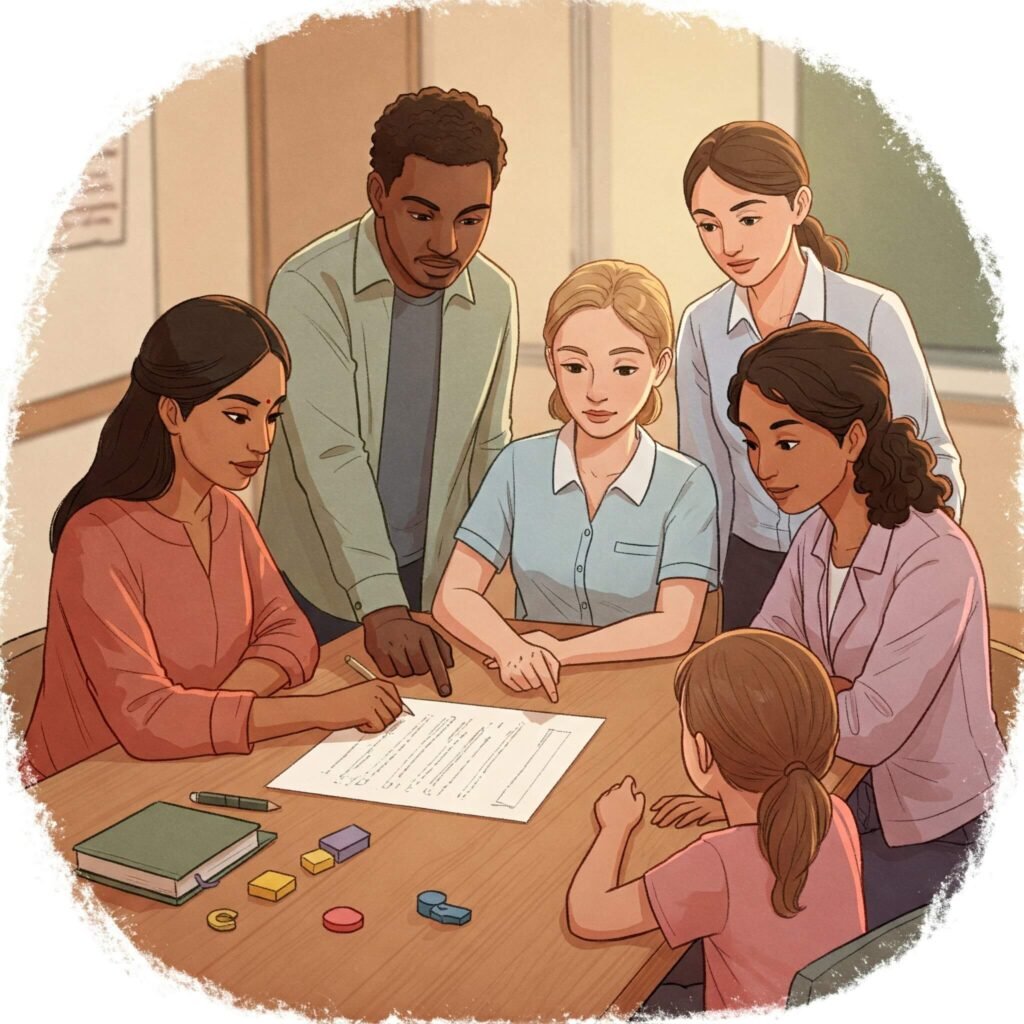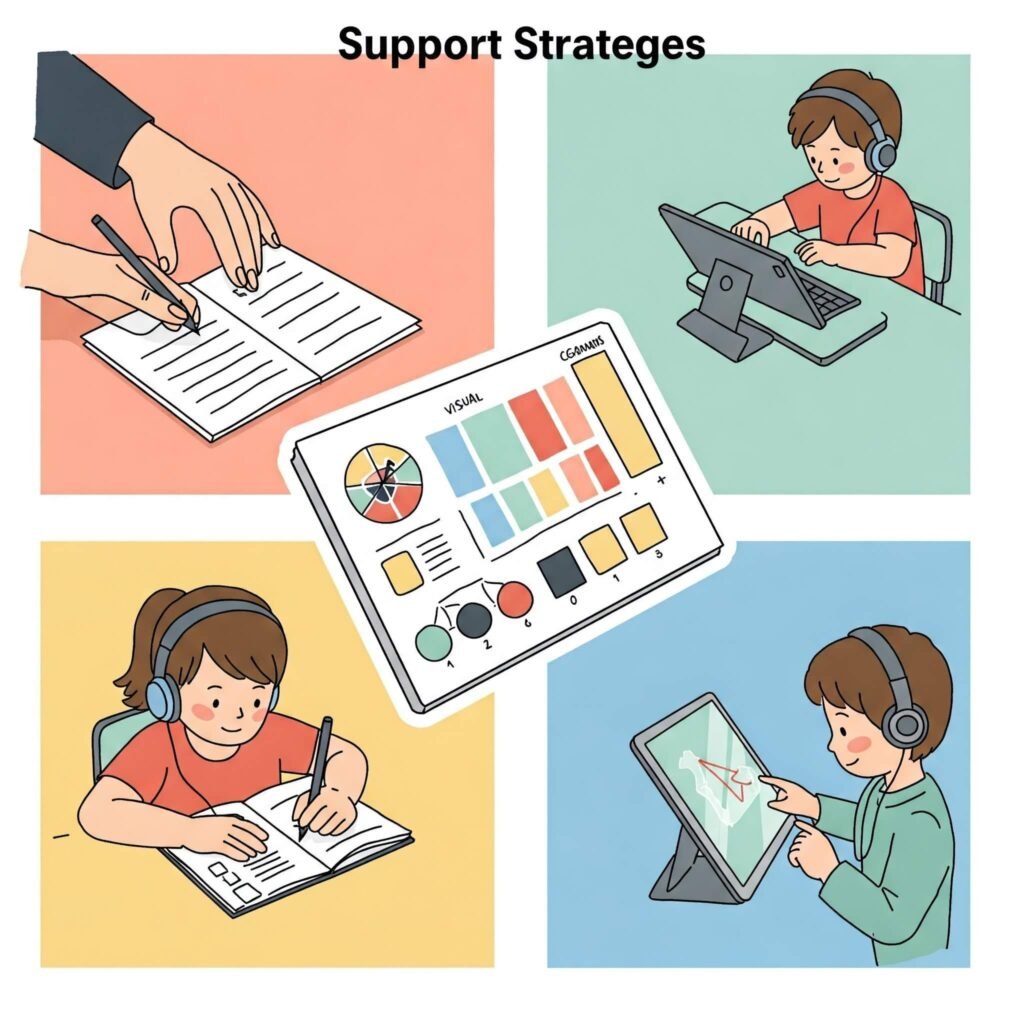Understanding Overcome Learning Difficulties
To effectively support a child, it’s essential to understand the landscape of learning difficulties. These are not one-size-fits-all and can manifest in various ways, impacting reading, writing, math, language, and organizational skills.
Some of the more common learning difficulties include:
- Dyslexia: Primarily affects reading and language processing. Children with dyslexia may struggle with decoding words, reading fluency, and spelling.
- Dysgraphia: Impacts writing abilities. This can include difficulties with handwriting, spelling, organizing thoughts on paper, and expressing ideas in writing.
- Dyscalculia: Affects a child’s ability to understand and work with numbers. Challenges may include grasping basic math concepts, memorizing facts, and solving math problems.
- Auditory Processing Disorder (APD): Makes it difficult for the brain to interpret sounds. This can impact a child’s ability to understand spoken language, follow instructions, and filter out background noise.
- Language Processing Disorder (LPD): A type of APD that specifically affects the ability to attach meaning to language.
- Non-Verbal Learning Disabilities (NVLD): Characterized by challenges with non-verbal cues, social skills, and visual-spatial organization, often alongside strong verbal skills.
It’s also worth noting that while not a learning disability itself, Attention-Deficit/Hyperactivity Disorder (ADHD) often co-occurs with learning difficulties and can significantly impact a child’s ability to focus, organize, and complete tasks. (Source: HelpGuide.org)

Identifying Signs and Seeking Support
Recognizing the signs of learning difficulties early is crucial for timely intervention and support. While every child develops at their own pace, persistent struggles in specific areas warrant attention.
Signs that a child might be experiencing learning difficulties can vary by age but may include:
- Difficulty with letter and sound recognition.
- Struggling to read or spell age-appropriate words.
- Messy or illegible handwriting.
- Problems understanding or using spoken language.
- Difficulty remembering facts or sequences.
- Struggling with math concepts or calculations.
- Poor organizational skills.
- Difficulty following instructions.
- Avoiding reading or writing tasks.
- Low self-esteem or anxiety related to schoolwork.
If you notice several of these signs, it’s important to talk to your child’s teacher and pediatrician. They can help determine if a formal evaluation is needed. An evaluation can identify specific areas of difficulty and pave the way for targeted support. (Source: HealthyChildren.org)
Partnering with the School: IEPs and 504 Plans
Once a child is identified as having a learning difficulty, the school can be an invaluable partner in helping children overcome learning difficulties. Two common frameworks for providing support within the school system are Individualized Education Programs (IEPs) and 504 Plans.
- Individualized Education Program (IEP): An IEP is a legally binding document for students aged 3-21 who require special education services. It outlines a child’s current performance, sets annual goals, and describes the specific special education and related services they will receive, such as specialized instruction, therapy, and accommodations.
- 504 Plan: A 504 Plan is a blueprint for how a child with a disability will have access to learning in the general education classroom. It provides accommodations and support services to ensure the child has an equal opportunity to participate in the school environment.
The key difference lies in eligibility and scope. IEPs are for students who need special education services under the Individuals with Disabilities Education Act (IDEA), while 504 Plans are for students with a broader range of disabilities who require accommodations under Section 504 of the Rehabilitation Act. (Source: SGW Law Firm)
Collaborating closely with the school team – including teachers, special education teachers, school psychologists, and administrators – is vital in developing and implementing the most effective plan for your child. Open communication and active participation in meetings ensure your child’s needs are met.

Effective Strategies for Helping Children Overcome Learning Difficulties
Beyond formal plans, there are numerous strategies that parents and educators can implement to support children with learning difficulties. These approaches focus on leveraging strengths, addressing areas of challenge, and fostering a positive learning environment.
Strategies at Home:
- Create a Structured Environment: Establish routines for homework and studying. Provide a quiet, organized space free from distractions.
- Break Down Tasks: Large assignments can be overwhelming. Help your child break them into smaller, more manageable steps.
- Use Multi-Sensory Approaches: Engage multiple senses during learning. For example, use visual aids, hands-on activities, and auditory input to reinforce concepts. (Source: LDRFA)
- Focus on Strengths: Identify your child’s talents and interests and incorporate them into learning whenever possible. Celebrating successes in their areas of strength can build confidence.
- Develop Social and Emotional Skills: Learning difficulties can impact a child’s self-esteem and social interactions. Encourage activities that foster positive relationships and build confidence outside of academics.
- Promote a Growth Mindset: Emphasize effort and progress over perfection. Help your child understand that challenges are opportunities to learn and grow.
- Utilize Assistive Technology: Explore tools like text-to-speech software, audiobooks, graphic organizers, and other technologies that can support your child’s learning. (Source: UserWay)
Strategies in the Classroom:
- Provide Clear and Concise Instructions: Break down complex instructions into simpler steps.
- Offer Accommodations: Implement accommodations outlined in the IEP or 504 Plan, such as extended time on tests, preferential seating, or alternative formats for assignments.
- Use Visual Aids and Graphic Organizers: These tools can help students visualize information and organize their thoughts.
- Employ Differentiated Instruction: Tailor teaching methods and assignments to meet the diverse learning needs of students in the classroom.
- Provide Opportunities for Movement: Some children with learning difficulties benefit from incorporating movement into learning activities.
- Foster a Supportive Classroom Community: Create an environment where students feel safe to ask for help and where differences are accepted and celebrated.

Building Confidence and Resilience
Beyond academic strategies, nurturing a child’s emotional well-being is paramount in helping children overcome learning difficulties. Building confidence and resilience will empower them to face challenges head-on.
- Acknowledge and Validate Feelings: Allow your child to express their frustrations and challenges. Let them know that it’s okay to feel discouraged sometimes.
- Celebrate Effort and Progress: Focus on the effort your child puts in and the progress they make, no matter how small.
- Encourage Self-Advocacy: Teach your child how to communicate their needs and ask for help.
- Connect with Others: Encourage your child to connect with peers who have similar experiences or join support groups where they can share their feelings and strategies.
- Highlight Role Models: Share stories of successful individuals who have overcome learning difficulties.
- Focus on Interests Outside of Academics: Encourage participation in activities where your child can shine and build a sense of accomplishment.
Helping children overcome learning difficulties is a journey that requires a collaborative effort between parents, educators, and the child themselves. By understanding the challenges, implementing effective strategies, and fostering a supportive environment, we can empower children to navigate their learning differences, build confidence, and achieve their full potential. Remember, with the right support, every child can learn and succeed.
(Image Placeholder 4: A featured image concept: A child confidently climbing a small, manageable rock wall with the help of a supportive hand, symbolizing overcoming challenges with support. The background could be bright and encouraging.)
Outbound Reference Links:
- HelpGuide.org – How to Help a Child with a Learning Disability
- LDRFA – Strategies For Teaching Children With Learning Disabilities
- HealthyChildren.org – Learning Disabilities & Differences: What Parents Need To Know
- SGW Law Firm – What is the Difference Between a 504 Plan and an IEP
- UserWay – Assistive Technology Examples for People with Disabilities


































